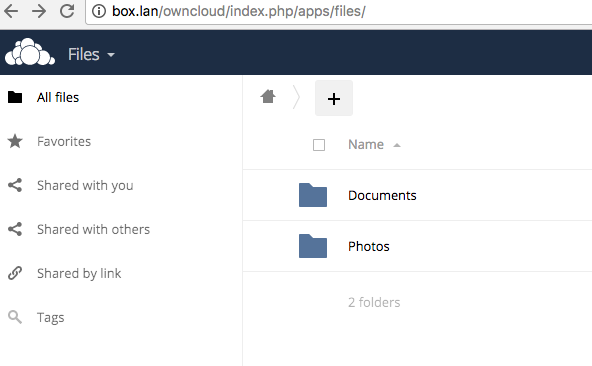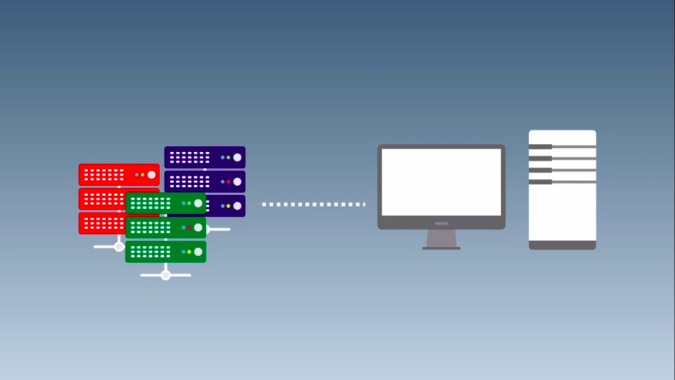
- #OWNCLOUD IN A BOX HOW TO#
- #OWNCLOUD IN A BOX UPDATE#
- #OWNCLOUD IN A BOX FULL#
- #OWNCLOUD IN A BOX CODE#
You should get this as the output: Distributor ID: Debianĭescription: Debian GNU/Linux 10 (buster) You can do that like this: # lsb_release -a Next, let’s make sure that we’re on Debian 10. Additionally, replace “ IP_Address” and “ Port_number” with your server’s respective IP address and SSH port number. Replace “root” with a user that has sudo privileges if necessary. Log in to your Debian 10 VPS with SSH as the root user: ssh IP_Address -p Port_number
#OWNCLOUD IN A BOX UPDATE#
Step 1: Log in via SSH and Update Packages
#OWNCLOUD IN A BOX FULL#
Full SSH root access or a user with sudo privileges is also required.A plan with more storage would be better for this type of software. For the purposes of this tutorial, we will use Debian 10 VPS.Step 3: Configure a Database for ownCloud.Step 1: Log in via SSH and Update Packages.a first run scripts goes to eff.org and requests a new cert, then installs it preconfigured into opensuse. HTTPS done safely is more problematic, I agree, but perhaps will become easier when the EFF ssl-cert project takes off, i.e. Didn't do it myself, but took about 30 seconds and appeared pretty obvious when we looked for the appropriate lines. With opensuse 13.2 (and thus PHP 5.6), it only required about two minor edits to the PHP.config.

Large file sizes used to be more problematic so I understand, prior to PHP 5.6, as it required some ugly workarounds. Some of this may be down to optimisation from OC7 to OC8, but I believe it is largely due to MariaDB. Mass upload was at least twice as fast, and not plagued by sqlite conflict errors as it struggles to keep up with the upload speed. Using mariadb appeared to have an enormous performance improvement over sqlite on my little 15W AMD box. like me, but unlike me they may not have a suitably linux savvy friend to achieve the above four points on a vanilla opensuse/ubuntu install.Īre there people that actually rely on a 32bit x86 image? i'd say even the oldest amd barton core CPU's and pre-Prescott Intel P4's are gone now. I think people are starting to look at the ubuntu/owncloud images and owncloud-in-box as a painless way to get an owncloud system running without the configuration headaches they may not have the skills to manage. In general I'm very impressed with how far ownCloud has come, and I'm happy that I could contribute my little part in it.
#OWNCLOUD IN A BOX HOW TO#
I'm sure there would be ways how to do that without jeopardizing the business model. But if there needs to be a formal agreement, it would be nice if it would better take into account the interests of both sides. I also have no doubt that the company is operating with the best intentions for the community. business model, and that a successful company is good for the community. I understand that this enables the ownCloud Inc.
#OWNCLOUD IN A BOX CODE#
but only get back what you would get anyway by publishing your code under the AGPL. You broadly give all rights on contributions to ownCloud Inc. Let's see where this goes.įrom a community point of view it would be great, if the contributor agreement would be a bit more fair towards contributors. There is some work going on in this area. That would extend the benefit of controlling your data in the cloud to a whole new group of people, who can't or don't want to run their own server. ownCloud has great success, and its development is coming along nicely, but I would still like to see some more things.įrom a technical point of view, client-side encryption would allow to use a hosted ownCloud without having to trust who is hosting the server.

I'm looking forward to the next fives, whatever they will be. ownCloud in a box is an easy way to try it and get started. It follows along the philosophy of ownCloud to make it as easy as possible to run it, so many people can do it on their own.

With SUSE Studio it became so easy to build easily deployable images for a broad variety of targets, such as a live CD, a VMware image, or an installation disk for a physical machine, that I just had to do it. Over the years it actually has gained even more power and relevance, as not only the cloud has become ubiquitous but also the threats to abuse it. The idea of giving people control about their data in the cloud was powerful.

When Frank started to discuss the idea of ownCloud and announced it at Camp KDE five years ago (another five, hooray) I was immediately intrigued.


 0 kommentar(er)
0 kommentar(er)
